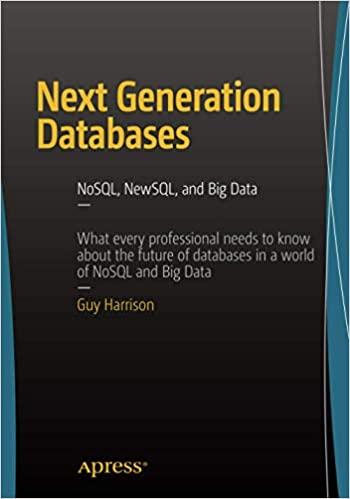Question
Create an ER diagram for the database using the ER model. Most universities in the country host events around campus and off campus. These events
Create an ER diagram for the database using the ER model.
Most universities in the country host events around campus and off campus. These events are organized by college students in most cases. Students are clustered RSOs (Registered Student Organizations) by different organizations, clubs, fraternities around campus. These events could be of different types: social, fundraising, tech talks, etc. Now, each university has a website where they post their events for the upcoming weeks. One needs to check the website to add each event to his/her calendar. These events are just official events and not all events around the university are included. Another limitation is that one has no way to track weekly events.
Any student (user) may register with the application to obtain a user ID and a password. There are three user levels: super admin who creates a profile for a university (name, location, description, number of students, pictures, etc.), admin who owns an RSO and may host events, and student who uses the application to look up information about the various events. Admin can create events with name, event category, description, time, date, location, contact phone, and contact email address. A location should be set from a map (Bing, Google, open street map) with name, latitude, longitude, etc. To populate the database, one can use feeds (e.g., RSS, XML) from events.ucf.edu. Each admin is affiliated with one university, and one or more RSOs. A user can request to create a new RSO or to join an existing one. A new RSO can be created with at least 4 other students with the same email domain (university), e.g., @knights.ucf.edu; and one of them should be assigned as an administrator. There are different types of events (social, fundraising, tech talks, etc.). Each event can be public, private, or an RSO event. Public events can be seen by everyone; private events can be seen by the students at the host university; and an RSO events can only be seen by members of the RSO. In addition, events can be created without an RSO (public events). Such events must be approved by the super admin. After an event has been published, users can add, remove, and edit their comments on the event, as well as rating the event on a s ca le o f 1 - 5 ( stars). The application should offer some social network integration, e.g., posting from the application to Facebook or Google. When logged in, Student should be able to view all public events, private events at their university, and event of RSOs of which they are member. They will not be able to create events, but should be able to rate, comment and edit (update) their comments for any event.
Step by Step Solution
There are 3 Steps involved in it
Step: 1

Get Instant Access to Expert-Tailored Solutions
See step-by-step solutions with expert insights and AI powered tools for academic success
Step: 2

Step: 3

Ace Your Homework with AI
Get the answers you need in no time with our AI-driven, step-by-step assistance
Get Started


